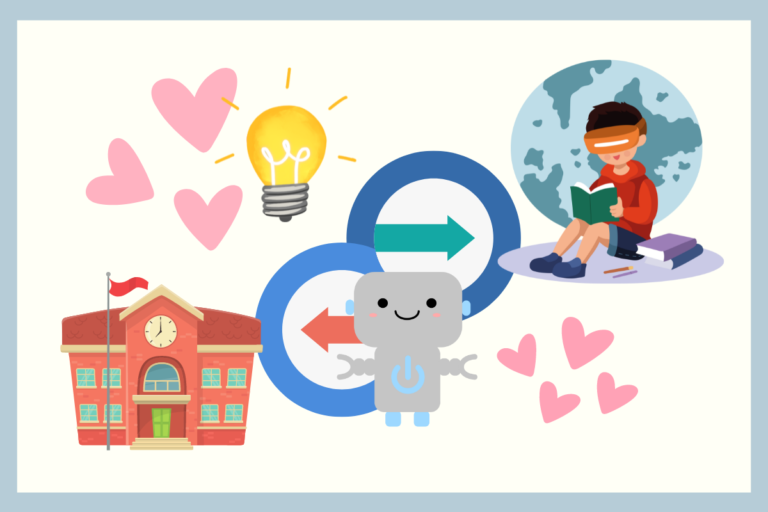
AI for Total Beginners: Understanding the Basics
Discover the world of AI with our beginner’s guide. Learn the essentials, from machine learning to natural language processing, and get hands-on tips to kickstart your journey into artificial intelligence today!
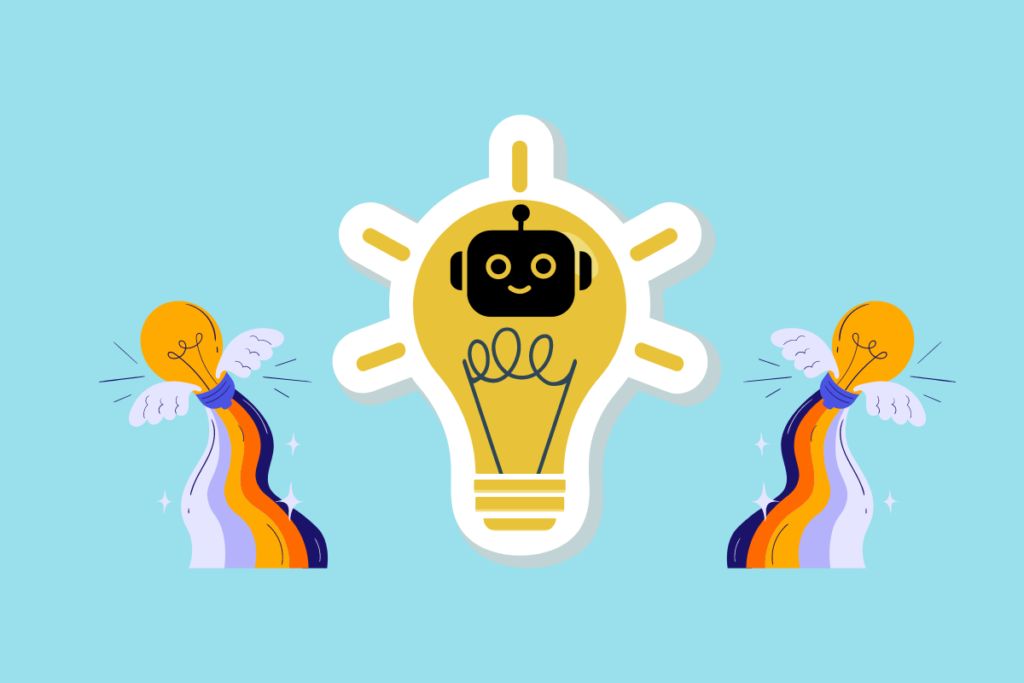
Introduction
What have you heard about AI? To be honest, AI seems to be one of those things that’s suddenly everywhere and all the hype, and then people seem to get over the initial romance with AI (or shock!), and no one’s talking about it.
But the truth is that AI isn’t going anywhere. Artificial Intelligence (AI) might have been a buzzword—but under the surface of all that hype, it’s quietly transforming the way we live, work, and interact with the world around us.
Still many people need a grasp on the basics, and there’s nothing wrong with that. In this post we will address: What exactly is AI, and why is it such a big deal? If you’re new to the concept, don’t worry—this guide is here to help you understand the basics of AI.
By the end of this article, you’ll have a solid foundation in AI, know where it’s used today, and have some practical steps to start your journey into the world of AI. Whether you’re curious about the technology or considering a career change, this is the place to start learning AI for beginners.
What is AI?
To understand AI, I’ll start with a simple definition that helped me: Artificial Intelligence is cognitive computing, or “smart” computing. Basically, we’ve taught computers to reason in a similar way to the way that we do: by teaching machines to apply reason and logic and “learn” the way we did when starting out in the world as kids..
Artificial intelligence is really the simulation, or mimicking, of human intelligence by computer systems. These systems are designed to think, learn, and make decisions, often imitating the cognitive functions that humans associate with the human mind, such as learning and problem-solving. If you’re hearing that computers are “pretending” to be smart, you’re not wrong. Fake it till you make it, right?
AI seems like it’s new, but actually AI has been around in theory for decades. The reason we hear so much about it now is because recent advances in computing power, algorithms, and data availability have all come together to turn AI into a practical and powerful tool that has the capacity to help humans in tasks across all industries. Artificial intelligence-driven systems and apps are now available everywhere. From Siri on your smartphone to complex algorithms predicting the stock market, AI is all around us.
Still, if we want to really grasp what AI is, it’s helpful to understand its evolution. Here’s what you need to know:
3 Key Concepts in AI

When we talk about AI, several key concepts come into play, each with its own significance. In other words, these are separate aspects of AI’s development that you should get to know if you want to understand AI better.
1. Machine Learning
Machine learning is a subset of AI where systems learn from data, improving their performance over time without being explicitly programmed. It’s the reason why Netflix knows what you want to watch next and why spam filters catch unwanted emails.
2. Deep Learning
This is a more advanced form of machine learning involving neural networks, which are inspired by the human brain’s structure. Deep learning has led to significant breakthroughs in image and speech recognition.
3. Natural Language Processing (NLP)
NLP allows machines to understand and respond to human language. It’s what powers chatbots, translation services, and voice-activated assistants like Alexa.
Computer Vision: This field of AI enables computers to interpret and make decisions based on visual input, such as recognizing faces in photos or detecting obstacles for self-driving cars.
Each of these concepts plays a vital role in creating the intelligent systems we interact with daily. They work together to help machines perceive, analyze, and act in ways that were once the exclusive domain of humans.
How AI Works: 3 Ways Machines Learn
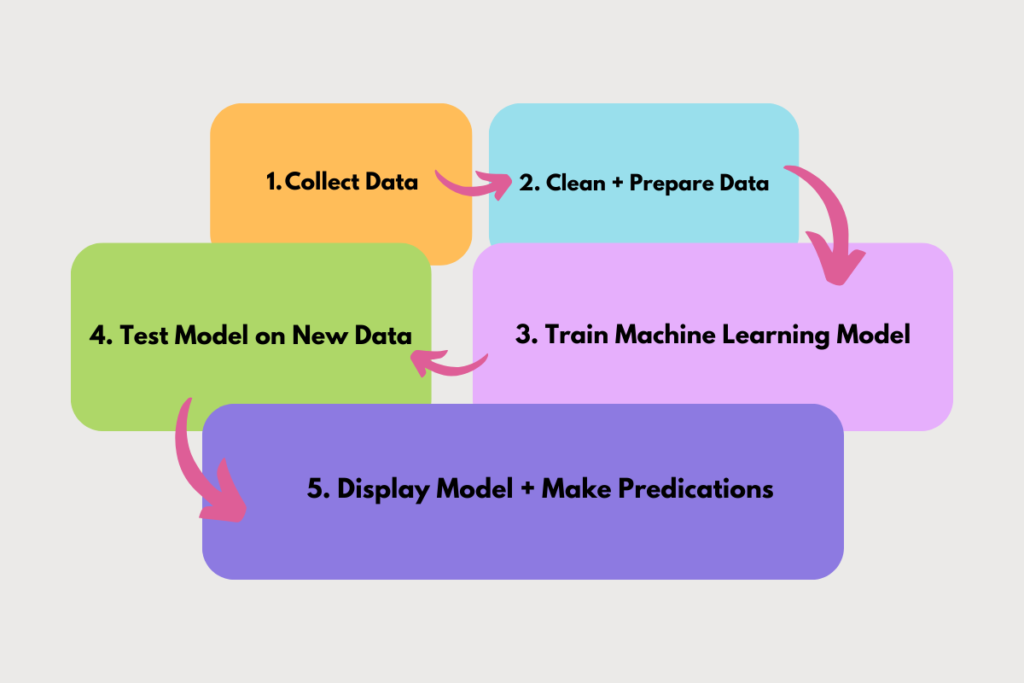
Machine Learning Algorithms
What do you know about algorithms?
Imagine you’re sorting through a pile of socks to find a matching pair. If you just grab random socks and hope to find a match, it might take a while. But if you have a plan—like sorting the socks by color first, then by size—you’ll find your pair much faster. That plan is like an algorithm.
An algorithm is a set of specific steps or instructions to solve a problem, just like the steps you follow when solving a puzzle or playing a game. Computers use algorithms all the time, to do things like finding information, sorting lists, or even playing games, and they follow these steps really, really fast.
So, instead of just guessing, the computer knows exactly what to do step by step to get the job done. If your Spotify or YouTube playlist recommendations come to mind, you’re on the right track!
At its core, AI is all about algorithms—sets of rules that tell a computer what to do. These algorithms are trained on vast amounts of data, allowing them to recognize patterns, make predictions, and adapt to new information.

1. Supervised Learning
In supervised learning, the AI is trained on a labeled dataset—meaning the data comes with correct answers. This allows the AI to learn to make predictions or decisions based on new data. For example, teaching a system to recognize cats in photos by showing it thousands of pictures of cats, all labeled as “cat.”
This is not too different to the way that preschool children learn new vocabulary with the use of flashcard aids. In medical school, students can use the same approach, only the vocabulary is on a higher level. In a similar way, AI began with simple differentiations, and worked its way to to being able to distinguish between even more complex concepts.
2. Unsupervised Learning
For this method of teaching machines, the AI is given data without explicit instructions on what to do with it. It must find patterns and relationships on its own, such as clustering similar items together or identifying anomalies.
In unsupervised learning, the AI is given data without any labels or explicit instructions about what to do. The AI’s job is to find patterns and make sense of the data on its own. It might group similar items together (a process called clustering) or notice unusual things that don’t fit the usual pattern (known as anomalies). This is like giving a child a box of puzzle pieces without showing them the final picture—they figure out how the pieces fit together based on what they observe.
For example, an AI could be given thousands of customer shopping habits, and without being told what to look for, it might identify that certain people tend to buy similar products, helping companies tailor their marketing efforts. Clustering is an important concept when machines learn by unsupervised learning methods.
3. Reinforcement Learning
This involves training an AI through rewards and punishments. The AI learns to achieve a goal by taking actions and receiving feedback, similar to how animals learn through trial and error.
Think about it this way: Reinforcement learning is like training a dog with rewards and punishments. The AI learns by doing—it takes an action and then gets feedback in the form of a reward (for doing the right thing) or a punishment (for doing something wrong). Over time, the AI learns which actions lead to the best outcomes, improving its behavior to maximize rewards.
For instance, when teaching an AI to play a video game, it might start by making random moves, but as it gets rewarded for good moves (winning points) and penalized for bad ones (losing points), it gradually learns to play more skillfully.
These methods, along with supervised learning, enable AI to tackle a wide variety of tasks—from identifying patterns in vast amounts of data to mastering complex games, making AI a highly adaptable and powerful tool.
Quick Recap: The three learning methods used to teach AI:
- Supervised Learning
- Unsupervised Learning
- Reinforcement Learning
These three learning methods, supervised, unsupervised and reinforcement learning, are what make AI so powerful and versatile. They enable AI to perform a wide range of tasks; everything from playing chess to diagnosing diseases. Keep them in mind when thinking about how AI learned to be so smart, and recall how it got its education. Keep in mind too, that without data, AI is nothing.
5 Key Applications of AI
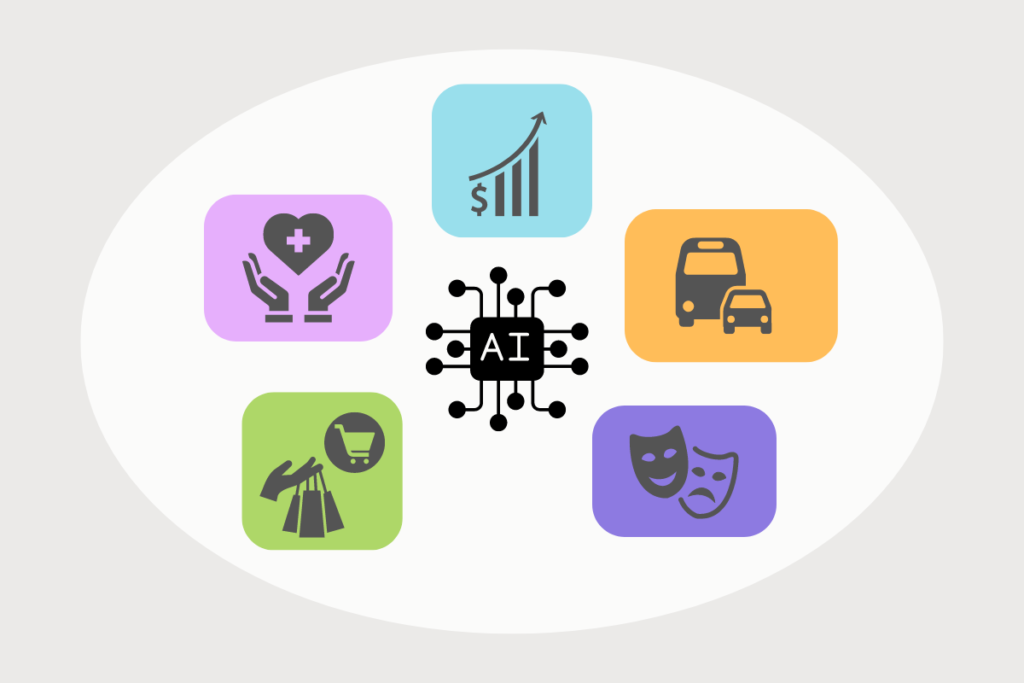
AI is not just theoretical; it has practical applications in nearly every industry. Whether it’s healthcare, finance, entertainment, or manufacturing, AI is revolutionizing the way tasks are performed, making processes more efficient, accurate, and adaptable. Here are a just a few examples of how AI is being used today:
(The opportunities for AI applications are almost limitless)
1. Healthcare
This one is pretty incredible, and the results of this are going to be measurable as great advances in human health and longevity in the very near future.
AI is revolutionizing healthcare by helping doctors diagnose diseases more accurately, predicting patient outcomes, and even assisting in surgeries. AI-powered systems can analyze medical images like X-rays or MRIs to detect conditions such as cancer at earlier stages than human doctors might. Additionally, AI tools are being used to design personalized treatment plans based on a patient’s medical history and genetic information.
Even more exciting, AI holds great potential in the field of disease prevention, offering new tools and methods for detecting, predicting, and preventing illnesses before they become widespread or severe. Think of scientific breakthroughs to be made with the help of AI as we tackles some of the most difficult problems of the health of our species.
2. Finance
In the financial sector, AI is used for everything from detecting fraudulent transactions to predicting stock prices. AI algorithms can analyze vast amounts of financial data in real-time, making it easier to spot trends and make informed decisions.
AI is increasingly being used for fraud detection, automating trading, and managing risk. AI algorithms can analyze large volumes of data and detect suspicious activities or unusual transactions. Then they can provide real-time fraud alerts to beef up our security. In a similar way, AI-driven trading systems can analyze market trends and execute trades at speeds and accuracies far beyond human capabilities. As if those Wall Street bankers aren’t powerful enough!
Don’t worry, with artificial intelligence and blockchain technology, the financial system might be poised for a much-needed overhaul. Find out how and why here:
3. Transportation
Self-driving cars might be the most talked-about application of AI in transportation, especially if you follow the work of Elon Musk, who believes that in the future all cars will be self-driving. But how do they do it? To drive cars automatically, and without the help of a human, AI systems process data from cameras, sensors, and GPS to navigate roads and avoid obstacles, aiming to make driving safer and more efficient.
Self-driving cars are one of the most exciting and visible applications of AI in transportation. Companies like Tesla and Waymo are developing autonomous vehicles that can navigate roads, avoid obstacles, and make decisions in real time, all thanks to AI. AI is also being used to optimize public transportation systems by predicting traffic patterns and scheduling routes more efficiently. If you’re fed up with transportation now, take comfort in the idea that with time, things are going to get a lot better in the commuting and logistics department.
And way less road rage, that’s for sure.
4. Retail
AI already helps retailers personalize shopping experiences, manage inventory, and optimize pricing in the background of your online shopping experience. For example, recommendation engines using AI can suggest products based on past purchases, and AI-driven chatbots assist customers in real-time. Yes, don’t worry, chatbots may not be perfect now, but they will certainly get better, as well.
AI is quietly revolutionizing the shopping experience through personalized recommendations and inventory management. Online retailers like Amazon already use AI to analyze customer browsing habits, purchase histories, and preferences to suggest products customers are most likely to buy. In physical stores, AI is helping optimize supply chains and reduce waste by predicting demand for products more accurately. Less waste is a good thing!
5. Entertainment
AI is getting better at understanding what you like so it can sell you things. This is true for your entertainment streams, too. Whether you’re on TikTok or Netflix, AI is behind the scenes, learning your tastes and making better recommendations about new things to watch or play.
From creating realistic CGI in movies to recommending new music, AI is improving your entertainments experience over time. Streaming services use AI to suggest content based on your preferences, while video games adapt to your playstyle.
And it doesn’t stop there. AI is even being used to create new music, art, and video games, blurring the lines between human creativity and machine-generated content. The super gamers and artist of the future won’t be AIs; they will be the people harnessing and using AI to create better art.
5 Tips for How to Learn AI for Beginners

With all this talk about AI I hope you’ve started thinking about how you can better make use of AI to solve problems, automate tasks and enhance your own workflow or creativity. If you’re wondering how to get started with AI, here’s a step-by-step guide:
Tip 1. Start with the Basics
Begin by learning the fundamentals of AI, machine learning, and data science. Online courses, such as those offered by Coursera, edX, or Udacity, are excellent starting points. When we first started learning about AI, we took a this foundational specialization course by IBM: AI Foundations for Everyone. Highly recommended!
Tip 2. Develop Key Skills
If you’re thinking about working with AI you will want to focus on acquiring some key skills. The good news is that there are focused courses by some of the top companies and universities in technology that you can take to advance your skills and work-readiness in just 1-6 months. What skills? To work with AI, you’ll need a strong foundation in programming (Python is the most popular language in AI), mathematics (mostly linear algebra, calculus, and probability), and data analysis. If you’re serious about AI, this will turn you into an AI master!
Tip 3. Get Hands-On
If you want to create your own AI applications, don’t wait until you know everything. Look into no-code options to test ideas, work with existing AIs using APIs, and start working on projects that interest you. Whether it’s building a simple chatbot or analyzing a dataset, practical experience is crucial. When it comes to programming, tools like TensorFlow, PyTorch, and Jupyter Notebooks are widely used in the AI community.
Tip 4. Join a Community
Engaging with other learners and professionals can accelerate your learning. Join forums like Reddit’s Machine Learning community or attend local AI meetups. Other options include following popular creators or influencers in the AI space on platforms like X (Twitter) or YouTube, and accessing their communities. If you are interested in generative AI, there are plenty of communities around AI models like Midjourney, for example.
Tip 5. Build a Portfolio
Don’t forget to keep track of your learning journey. As you work on projects, document your progress and share it online. GitHub, Stack Overflow or Kaggle are good places to do this. Remember that a good portfolio showcases your skills to potential employers and helps you track your own growth. Don’t forget to share your Coursera or EdX certificates on your LinkedIn Profile.
Remember, learning AI is a journey, and there’s always more to explore. Start with small steps, and as your skills grow, so will your confidence.
Challenges and Future of AI
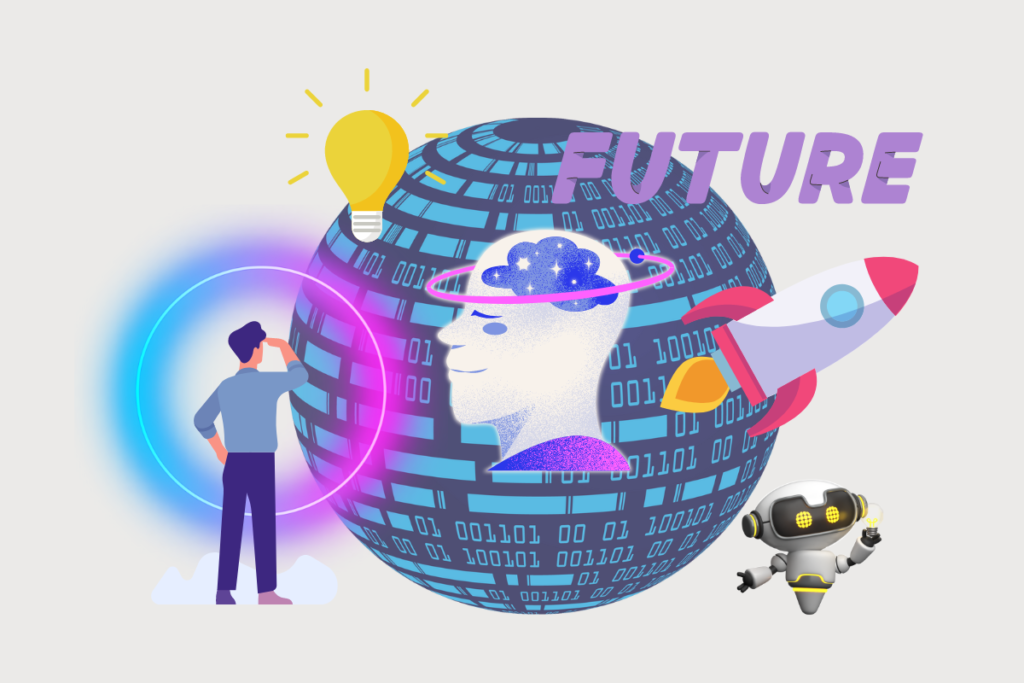
While AI holds great promise, it also presents some challenges, especially around ethics, privacy, and job displacement. As AI systems become more powerful, ensuring they are used responsibly is critical. We will need to create systems that are transparent, fair, and aligned with human values. If you are interested in AI Ethics, there will be roles for people with the knowledge and skills to guide the use of AI across industries.
Looking ahead, I think you will agree that the future of AI is bright. And it’s only the beginning! Advances in quantum computing, AI ethics, and the integration of AI with other emerging technologies like blockchain will shape the next generation of intelligent systems. For beginners, this means a wealth of opportunities to contribute to a rapidly evolving field. To paraphrase something that Sam Altman (the founder of OpenAI) himself has said, no one is an expert in AI, we are all starting at the beginning.
Get on the ground floor with AI today and put yourself in a position on the leading edge of progress, whatever you decide to apply it to.
Useful links for AI Beginners
- Coursera – AI for Everyone (by Andrew Ng):
AI for Everyone Course
This course provides a comprehensive introduction to AI, especially for beginners. - TensorFlow – Machine Learning for Beginners:
TensorFlow Tutorials
Google’s TensorFlow offers free tutorials that can help readers get hands-on with machine learning models. - MIT OpenCourseWare – Artificial Intelligence Courses:
MIT AI Courses
MIT’s free open courses provide deeper insight into AI and machine learning, with materials available online. - Towards Data Science – Guide for Beginners in AI:
Towards Data Science AI Guide
A community article that gives a great breakdown of AI and its real-world applications. - DeepMind – Introduction to AI and Machine Learning:
DeepMind Blog
DeepMind’s blog offers great articles on cutting-edge AI research and advancements in the field.
Conclusion
As we wind up this post, remember that AI is no longer the stuff of science fiction—it’s a reality that’s changing the world around us. Think about the communication system on the starship in Star Trek, or its AI crew member, Data. When you understand the basics of AI, you’re taking the first step toward harnessing this powerful technology. Whether you want to pursue a career in AI or simply stay informed about the latest developments, now is the perfect time to dive in and start learning.
Thank you for reading this guide on AI for beginners. We hope you’re inspired to explore this exciting field further. Please follow our blog for more insights into AI, technology, and the digital future, and submit any questions or queries to hello@technobaddie.com.
–Vonsassy

